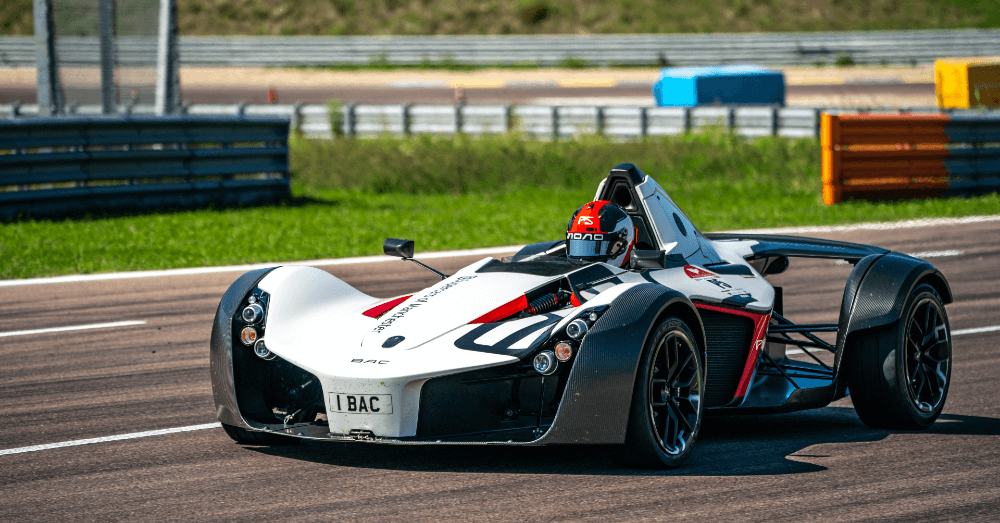The Briggs Automotive Company (BAC) Mono is a lightweight, single-seater, open-top, road-legal sports car that brings amazing build tech to the market.
BAC was founded in 2009 by two brothers in Liverpool, United Kingdom. BAC Mono cars are exported to 47 countries, but the important part of this company and its development can be found in the consultation provided for well-known car brands, including Mercedes, Porsche, Bentley, and Ford. BAC has consulted on design and engineering projects, but they also have their own ventures, which brought about the Mono and Mono R sports cars.
The BAC Mono is light and quick
The first version of the BAC Mono took the world by storm. This lightweight sports car checks in at only 1,190 pounds, which is insanely low. No wonder they used a Ford Duratec 2.3-liter four-cylinder engine to power this car. Cosworth heavily modified the engine to produce 280 horsepower at 7,700 rpm. Power is sent to the wheels through a six-speed Hewland transmission. This is enough power to send the car to 60 MPH in less than 2.8 seconds and to a top speed of 170 MPH.
Incredible construction
The tech that goes into this lightweight sports car matters. It could be used in many future supercars to help make cars lighter as the powertrains get heavier with the inclusion of hybrid and electric motors. The BAC Mono has a nearly equal weight distribution with a 48/52 front/rear ratio. That’s pretty incredible. The car is constructed of carbon fiber with a tubular steel driver safety cell. It has an FIA-compliant rollover protection system, which is similar to a DTM race car. It has a pushrod suspension and adjustable dampers that can be adjusted for driving on the road or the track. It is one of the lightest road-legal cars of its kind.
Engine upgrade
The success of the early models led BAC to upgrade the engine. A new Cosworth engine was added in 2015, giving the car a 2.5-liter Mountune Racing engine that produces 305 horsepower at 8,000 rpm. Other changes were made to the body to improve performance. Some of these include a wider chassis, which gives drivers more room. The changes added 88 pounds to the car, which still keeps it light and fun.
The Mono R
To keep things interesting and avoid becoming stagnant, BAC launched a new version of its sports car in 2019. At the Goodwood Festival of Speed the Mono R made it debut. This car has higher performance figures, its lighter, and has more advanced features. The Mono R is 38 horsepower more powerful and 55 pounds lighter than the standard Mono. This gives it an amazing power-to-weight ratio.
It’s not the same
The Mono R looks a lot like its predecessor, but all of its surfaces were designed from scratch, and it features 44 bespoke carbon parts that have been restyled to give the car a more aggressive stance. The shark nose front stands out on this car and the centrally mounted main beam LED headlights reduce the frontal area and contribute to a minimalist appearance.
The graphene-enhanced build
The BAC Mono R is the first production car in the world using graphene-enhanced carbon fiber in every body panel. This revolutionary material improves the structural properties of the fiber to make the panels stronger and lighter. It also increases the toughness and improves thermal properties of the vehicle.
The use of graphene allows the vehicle to have the structural properties of carbon fiber in fewer sheets, which allows the car to be lighter and could lower costs. The graphene-enhanced carbon panels required two sheets of carbon fiber instead of three.
A successful APC-funded Research & Development project helped push graphene technology into the production readiness phase. Now, it’s in full series production, as it has been for a few years.
What’s next for BAC?
BAC announced a feasibility study into the use of hydrogen in powering the Mono. This study will be conducted alongside Viritech, a clean tech company. This would create the e-Mono, which could use a hydrogen fuel cell powertrain in the existing Mono chassis, creating a clean-running version of the lightweight car. The electric advantage of a hydrogen fuel cell allowed the e-Mono to complete a simulated lap of the Silverstone Circuit two seconds faster than the Mono R.
Will the BAC graphene-enhanced body panels make it to other sports cars? Its something that could easily happen in the near future, which might allow some supercars to be lighter and faster than before.
